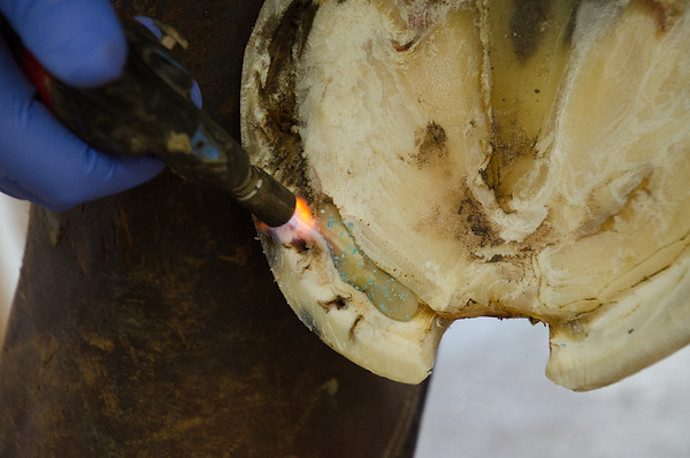Many farriers across North America have told American Farriers Journal that this has been one of the worst years for fungal- and bacterial-related problems in the hoof wall. To help keep the invading microbes at bay, one farrier uses an all-natural solution — beeswax.
“People talk about how it has natural anti-fungal and anti-microbial properties, so why can’t we use beeswax?” asks Shane Westman, farrier at the University of California, Davis.
A research team at the University of Pisa led by Filippo Fratini, affirms the anti-fungal and anti-microbial benefits of beeswax in a paper titled, “Beeswax: A Minireview Of Its Antimicrobial Activity And Its Application In Medicine,” which was published in the July 2016 issue of Asian Pacific Journal of Tropical Medicine.


Westman softens the beeswax with a portable butane torch (Figure 1, above), and then cuts a length matching the void in the foot (Figure 2, above). He rolls in to form what he calls a worm (Figure 3, below).

Figure 3: Roll the warmed wax into something that resembles a worm.
“I put it anywhere that’s questionable,” Westman says. “Anything that I can’t get wholly clean, I’ll roll the worm in copper sulfate to avoid causing an anaerobic environment.”
After placing it in the void, he runs the butane torch over the worm to melt it and seal it in place (Figure 4, above).
“When you pull it out after the shoeing cycle, it will be stained,” Westman explains. “When you glue on a shoe, the adhesive will work around it and sticks really well. It keeps the area treated very nicely.”
How do you prevent bacterial and fungal problems in your hoof care? Let us know in the comments section.









Post a comment
Report Abusive Comment